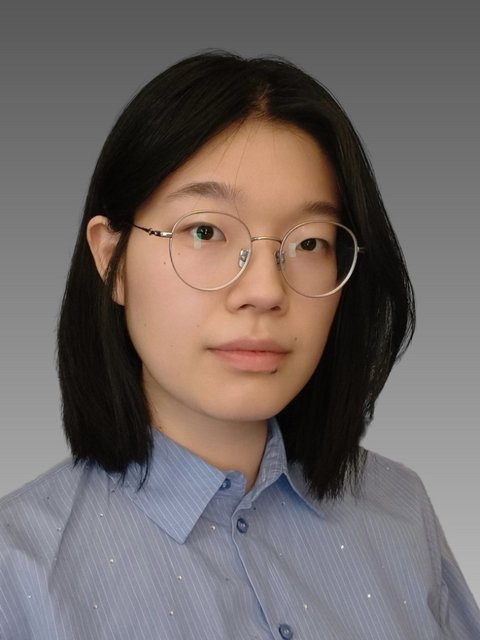
Zifei Zhang
Friedrich-Schiller-Universität Jena
Albert-Einstein-Straße 6 | R. 210
Tel.: +49 (0) 3641 9-48082
07745 Jena
Curriculum Vitae
Research Experience
- 02/2021-12/2021
Internship, Nano & Quantum Optics
Worked with M-profile optical fiber.
Coupled IR-laser into the fiber and observed optical modes with CCD. - 02/2022-05/2023
Research Lab, Nano & Quantum Optics
Worked with Transition Metal Dichalcogenides (TMDs).
Operated Confocal-Fluorescence Microscope and Scattering Scanning Near-field Optical Microscope (Neaspec IR-neaSCOPE).
Investigated second harmonic generation (SHG) in monolayer WSe22 and WS22.
Analyzed Photoluminescence (PL) and Raman spectra. - 06/2023-04/2024
Master Thesis, Nano & Quantum Optics
Worked with Kelvin Probe Force Microscope (KPFM, JPK NanoWizard).
Studied Si nanoparticle arrays and their optical properties.
Investigated hybrid systems: TMDs-monolayer/Si-nanoparticles.
Analyzed Photoluminescence (PL), Raman spectra using Python and Matlab, and processed KPFM images.
Education
- 10/2020-06 2024
MSc. Photonics at Friedrich-Schiller-Universität Jena
Relevant courses: Applied and Physical Optics, Foundation of Precision Mechanism Design, Analog and Digital Electronics, Principle and Design of Optoelectronics Instrument. - 09/2016-07/2020
BSc. Measurement Control Technology and Instrument at Beijing Institute of Technology (China)
Thesis title: Colour characterisation of display devices - Colour space transformation using machine learning training models.
PhD Project
This project employs time-resolved second-harmonic generation (SHG) spectroscopy to investigate light-driven transient changes in charge density distributions at photo-polarizable interfaces and membranes.
The study focuses on multiple material systems: photosensitive carbon nanomembranes and van-der-Waals heterostructures of transition metal dichalcogenides are examined to unravel switching dynamics and valley-selective polarizability effects, while rare earth/transition metal-doped oxide glasses are explored for their photo-poling behavior. Additionally, molecularly thin Langmuir layers serve as platforms to probe orientation-dependent charge dynamics of supramolecular aggregates, and synthetic lipid membranes with light-responsive ion transport properties are analyzed for their electrical rectification capabilities.
Collaborations with PhInt research groups enhance the project’s scope: research groups of Prof. Turchanin and Prof. Presselt can provide functionalized nanomembranes and Langmuir-Blodgett layers, Prof. Schröder’s group contributes light-tunable lipid membranes, and Prof. Wondraczek’s group can offer expertise in poling dynamics of doped glasses.
Experimental methods center on ultrafast pump-probe SHG spectroscopy, enabling picosecond-resolution tracking of nonlinear polarizability changes. Key parameters—excitation wavelength, intensity, polarization, and SHG fundamental wavelength—are systematically varied to dissect dynamic contributions. For further development, a novel polarization-resolved back-focal plane SHG imaging technique can be proposed, extending prior applications in single-molecule studies to map orientation shifts in supramolecular membrane aggregates.
By correlating SHG signal variations with transient charge redistribution, the project aims to advance understanding of light-matter interactions in various materials, with potential implications for optoelectronics, photonics, and bioinspired membrane technologies.
Publications
- B.N. Tugchin, N. Doolaard, A.I. Barreda, Zifei Zhang.
Photoluminescence Enhancement of Monolayer WS2 by n-Doping with an Optically Excited Gold Disk. Nano Lett. (2023).